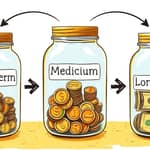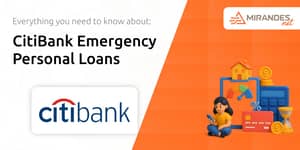
In today’s fast-paced world, unexpected expenses can strike at any moment. When urgent financial needs arise, personal loans can offer a lifeline—but only if used wisely. View a personal loan as a temporary aid to guide you through a short-term hurdle, rather than a long-term budget crutch. In this article, you’ll learn why treating loans as a bridge, not a budget, can preserve your financial stability and pave the way to greater security.
Bridge loans and personal loans serve different purposes, though both provide cash when you need it most. A bridge loan is a short-term financing solution designed to cover immediate funding gaps until more permanent financing is in place. In contrast, a traditional personal loan is an unsecured, installment-based debt product repaid over a longer period, typically one to seven years.
Knowing how each product works will help you decide when to use which tool. While bridge loans often require collateral and carry higher rates, personal loans offer fixed monthly payments at lower interest rates—provided they’re used for their intended purposes.
Before selecting a loan, consider these critical differences. The table below highlights features that distinguish bridge loans from ongoing personal loans used for budget support.
In Q1 2025, Americans held approximately $253 billion in personal loan debt across 24.6 million borrowers. This debt represents 1.4% of all consumer obligations and 5.1% of non-housing liabilities. While nearly half of personal loans are used for debt consolidation, almost 9% go toward everyday bills—an alarming trend.
Relying on personal loans for recurring expenses often signals a deeper financial imbalance. Covering month-to-month gaps through borrowing can lead to mounting interest charges and potential credit harm if payments are missed.
While personal loans can ease cash flow in a pinch, using them as a regular budget patch is fraught with peril. Repeated borrowing for basic expenses can create a cycle of debt dependence, where more loans are required just to manage existing repayments.
Key risks include:
Experts agree that personal loans should function as a bridge to stability, not a permanent budget tool. Here’s how to use them wisely:
By adhering to these practices, you’ll harness the flexibility of personal loans for short-term needs without jeopardizing long-term goals.
Before turning to credit, explore alternatives that build resilience:
1. Emergency savings: Establish a separate fund for unplanned costs.
2. Expense reduction: Audit recurring subscriptions and negotiate bills.
3. Supplemental income: Consider side gigs or freelancing to boost cash flow.
4. Payment plans: Negotiate installment agreements with service providers.
Imagine two homeowners facing financial transitions:
Scenario A: Sarah secures a bridge loan to purchase her dream home before selling her current property. The sale closes in six months, she repays the lump-sum, and moves on with minimal stress.
Scenario B: Jason uses personal loans every quarter to cover his rent and utilities. Over two years, he accumulates four loans, struggles to make payments, and faces a credit score drop that blocks him from better financing options.
These contrasting outcomes illustrate the importance of aligning loan use with clear, temporary objectives—an approach that respects both your immediate needs and your future stability.
Personal loans, when treated as a temporary bridge, can empower you to navigate emergencies and seize opportunities. However, when used as a recurring budget patch, they risk trapping you in a cycle of debt. Adopt thoughtful borrowing strategies, build safety nets through savings, and explore alternative solutions to maintain financial health. By doing so, you’ll step onto the stable side of that bridge, ready for whatever lies ahead.
References













